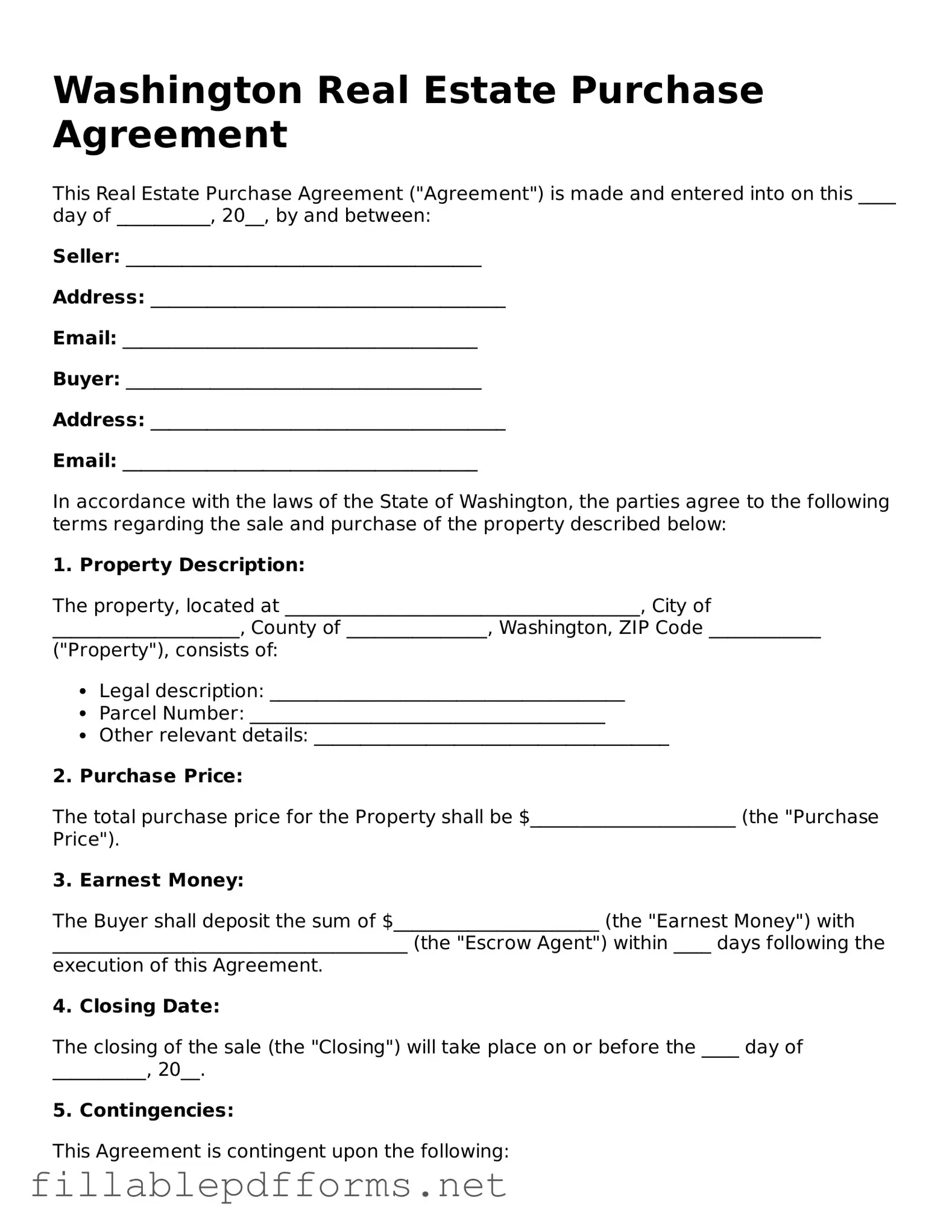Attorney-Verified Real Estate Purchase Agreement Form for Washington State
The Washington Real Estate Purchase Agreement form is a legal document that outlines the terms and conditions under which a property is bought and sold in Washington State. This agreement serves as a crucial tool for both buyers and sellers, ensuring that all parties understand their rights and obligations throughout the transaction process. Understanding this form is essential for anyone involved in real estate transactions in Washington.
Launch Editor Here
